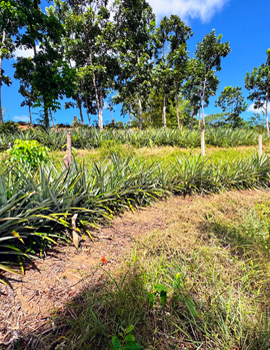While the GEF does not have an operational definition of nature-based solutions (NbS), the partnership has been supporting endeavors to protect, restore, and sustainably manage natural resources for almost three decades. Moreover, GEF projects have been leveraging several environmental management tools that encompass NbS, including ecosystem-based adaptation (EbA), integrated land management (ILM), sustainable land management (SLM), and forest and landscape restoration. When referring to NbS, GEF projects tend to draw from the International Union for Conservation of Nature (IUCN), which defines NbS as actions that protect, manage, or restore natural or modified ecosystems to effectively and adaptively address societal challenges while providing human well-being and biodiversity benefits.
The term NbS began to appear in GEF strategy and programming directions in GEF-6 and became broadly embedded in GEF-7. Nature-based solutions are now integral to GEF-8 focal areas and integrated programs. For example, the Ecosystem Restoration Integrated Program aims to restore degraded ecosystems and landscapes to provide multiple benefits for people and nature. The Food Systems Integrated Program also focuses on maximizing biodiversity values and sustainability in food production landscapes and seascapes. Nature-based solutions (NbS) have been a cornerstone of the GEF’s Least Developed Countries Fund (LDCF) and Special Climate Change Fund (SCCF) portfolio since inception. The GEF-8 programming strategy acknowledges NbS's high potential to deliver adaptation as well as a range of additional benefits contributing to the resilience of people and ecosystems, and biodiversity and climate change mitigation, highlighting it as a key means of effecting adaptation.
This evaluation aims to assess the GEF NbS strategy and project portfolio in order to provide insights and lessons for future programming, design, and implementation. The evaluation will be conducted at three levels—strategic, project and program, and country. The design is intended to cover accountability and lesson learning to inform future GEF programming.
